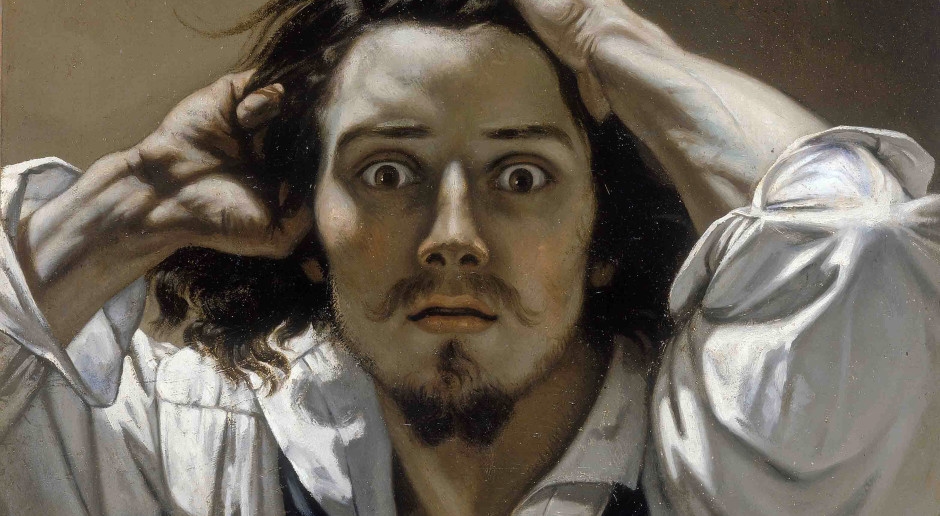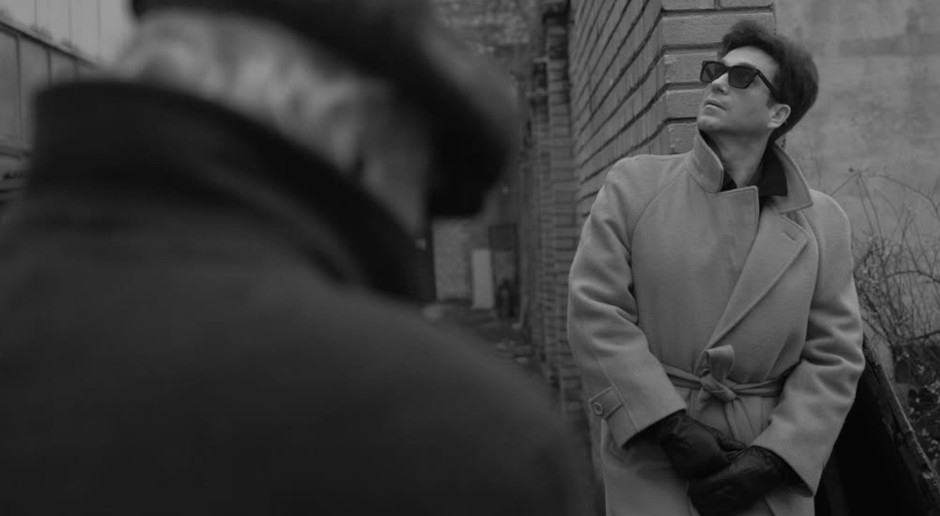What is intriguing and what is terrifying about Gustave Courbet's painting "The Desperate Man"?

Art historians consider Courbet a pioneer of realism, whose works stand out from the rest of his era. However, it's worth paying attention to his self-portraits, which constitute a completely different, perhaps somewhat mysterious, part of his oeuvre. Many of them were created in the early years of his career, and they also reflect the romantic and neoclassical visions within which the artist forged his path.
Among his self-portraits, the most attention-grabbing is "The Distraught Man," which Courbet painted at the age of 24, during his early creative period. The painting was created between 1843 and 1845 , although the artist dated it to a slightly earlier work, adding the date 1841, which scholars have deemed a deliberate error. Courbet likely wanted to "turn back the clock" to create the impression that he created the painting as a very young artist. In this way, he wanted to emphasize his genius and being ahead of his time, building his image as a rebel and a pioneer of realism.
Courbet's painting "The Despairing Man" - what do the master's large eyes say?One of Courbet's most remarkable self-portraits is a truly emotional message, allowing us to feel and understand the master's own feelings with such precision. Courbet gazes from the painting with a rather piercing gaze that evokes anxiety, fear, and terror. His dark brown eyes are filled with fear, and his mouth is poised to scream. His hands nervously run through his hair , reflecting the force the artist would have invested in this gesture in real life.
The light illuminating the painter's face from the left intensifies the feeling of unease present in the work, while the rather dark brown background allows us to focus on the face itself, analyzing it carefully.
The anguished facial expressions, presented in a dramatic composition, create a strong bond between artist and viewer. It's a silent cry for help that never came. The tension created in the painting is further emphasized by its small format (45x54), which accumulates emotions. It's likely for this reason that the self-portrait remained in the painter's private collection until 1873, when he exhibited it at the World's Fair in Vienna, then titled "Self-Portrait of the Artist" (Autoportrait de l'artiste) . Although the work belongs to the Romantic period, what the artist depicted in it undoubtedly identifies it as an exceptionally realistic vision.
Why did Courbet paint terror?This question has puzzled art historians for centuries. Some believe that Courbet enjoyed "drama," greatly exaggerating the situation, while others seek out true stories from his life that might have contributed to conveying such emotions in his work. The artist's fear in the face of numerous rejections from the Paris Salon is considered the main reason for the figures' terror on the canvas.
It's also worth considering that Courbet painted "The Distressed Man" at a time when his life was fraught with tension and conflict. He was a rebellious artist, criticizing authority and openly supporting the destruction of the Vendôme Column—a symbol of Napoleon III's power. He was later severely punished for this act: he was forced to pay a hefty fine, lost his fortune, and fled into exile in Switzerland (along with his self-portrait, further underlining the work's personal nature).
He had previously spent several months in prison for supporting the Paris Commune. All of these events demonstrate that Courbet often felt trapped, misunderstood, and persecuted, a fact he portrayed in this painting, reflecting a desperate, fearful, yet rebellious man.
Courbet - between romanticism and realismCourbet is undoubtedly one of the finest French painters of the 19th century. Although he was acclaimed for his other works, including landscapes and still lifes, the self-portrait was one he returned to repeatedly throughout his career. It is through this series of works of this type that we can further understand the painter's work, discerning the emotions he conveyed in his self-portraits. The artist drew inspiration from the works of Velázquez and Rembrandt, which he spent hours studying at the Louvre. He created oil on canvas, using thick layers of paint, which he mixed with sand and applied with a palette knife, allowing for a greater, more tangible depth to the entire work.
Courbet often returned to the motif of his own face, treating it as a field for experimenting with emotion and identity. In his self-portraits, we see him in many guises, as a romantic rebel, a melancholic musician, or a sensual dandy. These paintings are not only attempts to capture appearances but also studies of mood and psyche, in which the artist tested the boundaries between sincerity and creation.
In the tradition of the 19th century, young painters practiced expressing emotions through so-called head studies. Courbet took this convention to a new level. His self-portraits are full of theatrical expression, yet also disturbingly real. In "The Man with the Leather Belt," he resembles a confident seducer, while in "The Man in Despair" he depicts himself in a state of emotional crisis. It is precisely in this interplay between pose and authenticity that the power of his early self-portraits lies.
The "Desperate Man" Returns to ParisIt was recently revealed that the painting's current owner is the Qatar Museum. According to the French daily Le Monde, the Qatari museum purchased the painting from a descendant of one of Courbet's patrons for €50 million approximately 10 years ago. Thanks to the Qatar Museum, the painting will reappear in Paris, where it will reside for the next five years at the Musée d'Orsay. The Parisian museum also houses other famous works by the master, such as "The Burial at Ornans" and "The Origin of the World." After that, the work will move to the Art Hill Museum in Doha, which is still under construction, and will then be exhibited alternately in France and Qatar.
well.pl





